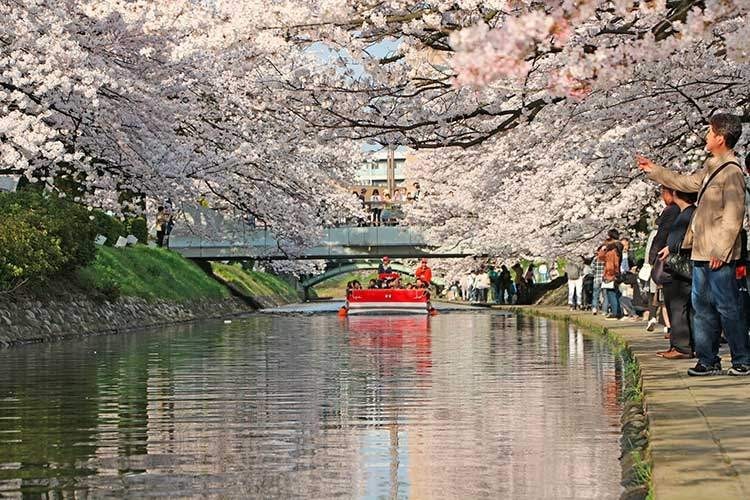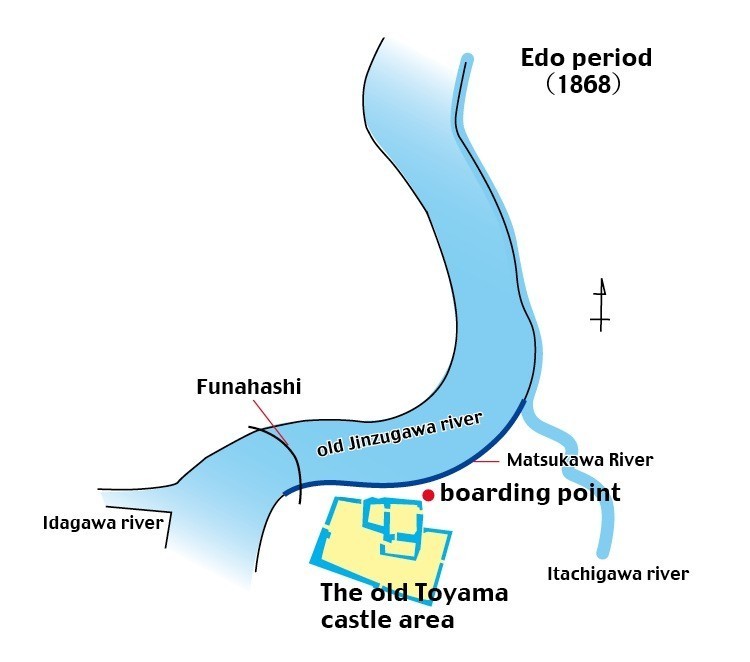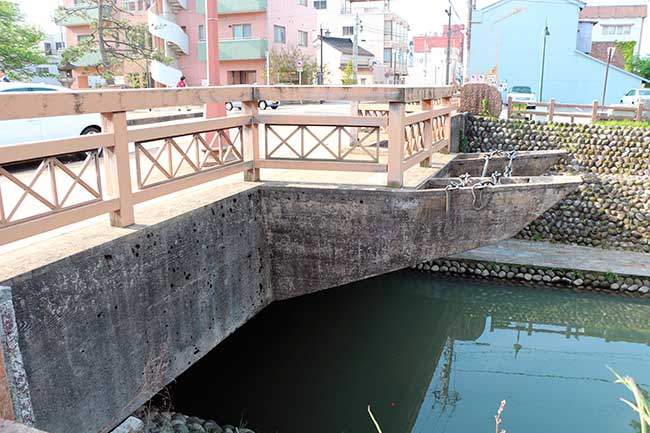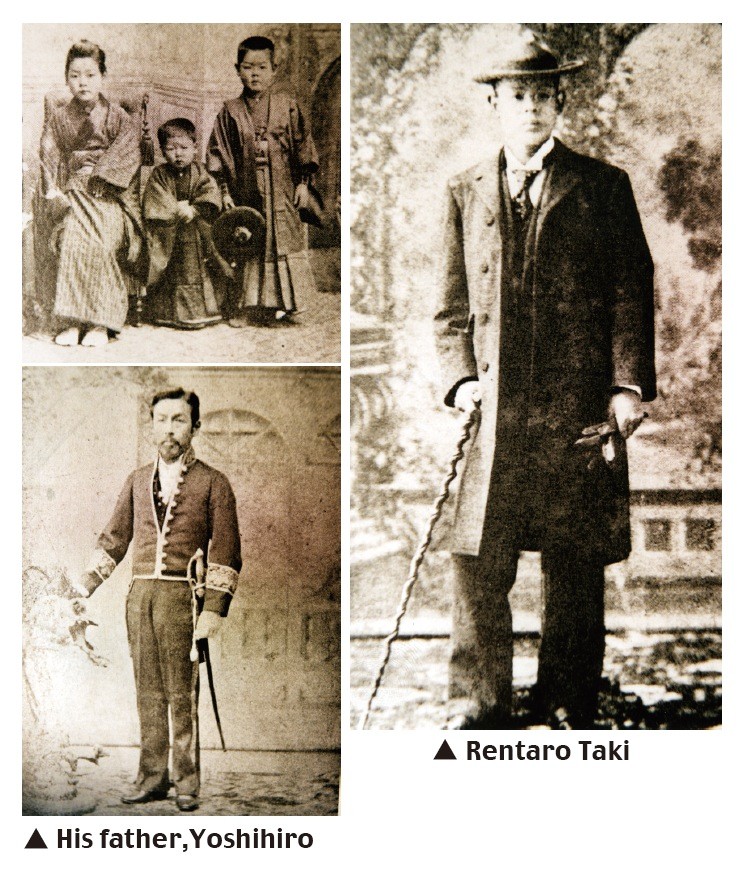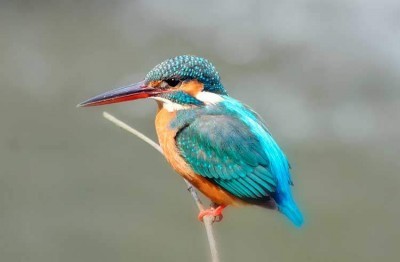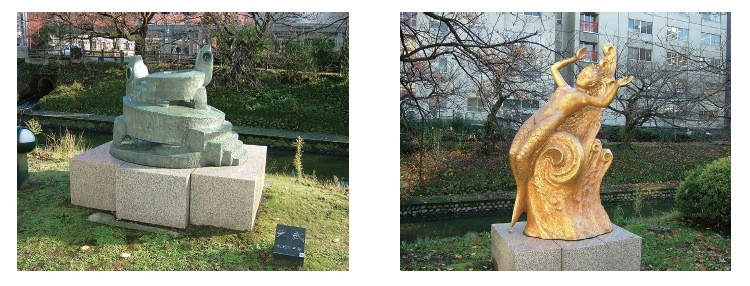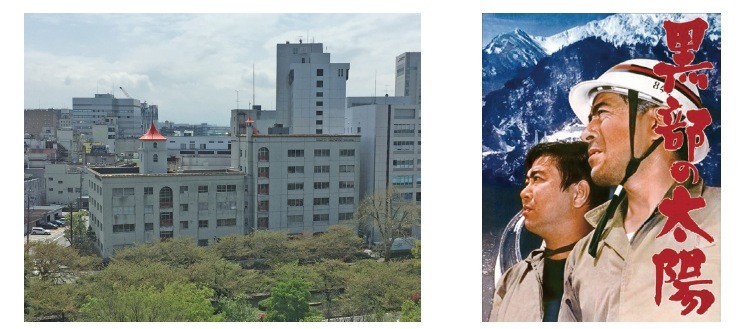実際のガイドでお楽しみ下さい。
① Toyama castle
On your left, you will see the area where the Toyama castle used to be during the Edo period.
The first castle was built over 470 years ago, and the last lord was the Maeda clan.
Today, this area is known as the TOYAMA castle park.
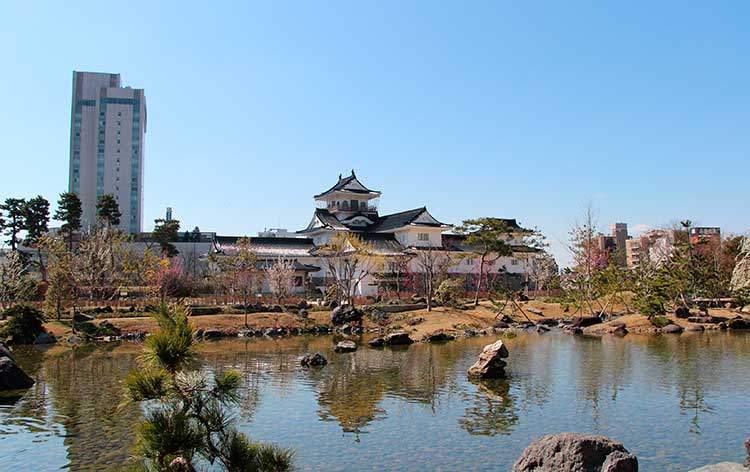
② Matsukawa River & Jinzugawa River
This river is called the Matsukawa river.
The Jinzugawa river is the biggest river in Toyama prefecture.
The Jinzugawa river used to flow here until 100 years ago.
At that time, its width was about 250 meters, much bigger than today.
Due to this, they needed flood control, so they got engineers to construct a bypass channel.
This is why the present Jinzugawa river takes a castle area different course.
This Matsukawa river is the remaining of the Jinzugawa river.
What we see on our right is reclaimed land.
③ Cherry blossoms (Sakura)
Look at the riverside. Most of the trees you see are cherry trees.
There are about 460 cherry trees lining the Matsukawa river.
This place is very famous for its beautiful tunnel of cherry blossoms.
The cherry blossoms usually bloom at the beginning of April.
koto performance by kinuyo OTA
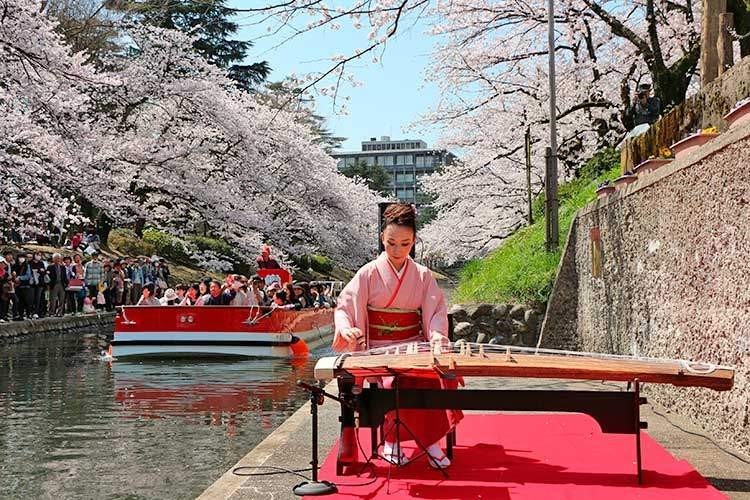
*KEIUN BRIDGE
The pond is a vestige of the inner moat of the Toyama castle, and you can see a lot of colored carp swimming.
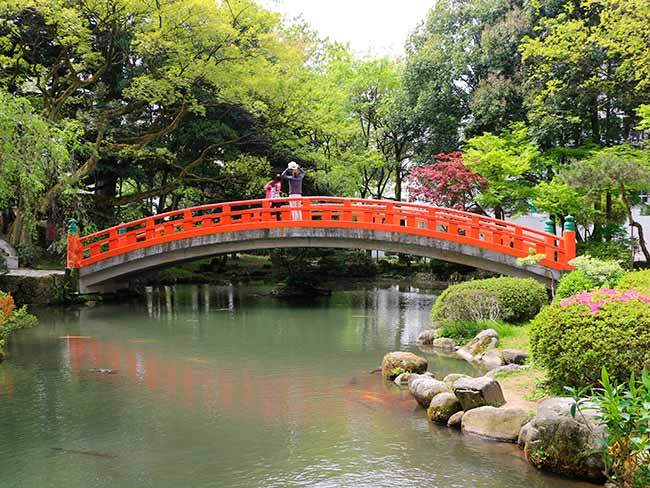
*SHICHIJYUNIHOBASHI BRIDGE
In old times, people could appreciate the 72 peaks of the Tateyama range from here.
This is why they named this Shichijyunihobashi.(Shichijyuni is 72)
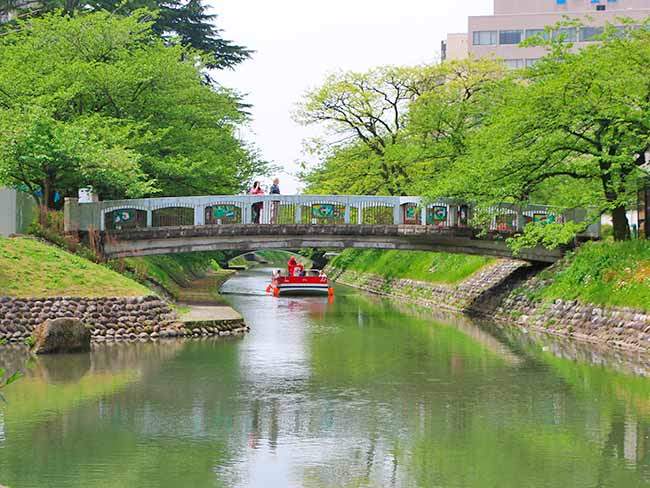
*AZUMI BRIDGE
As the Toyama castle was also called the “Azumi castle,” people called this bridge the Azumi Bridge.
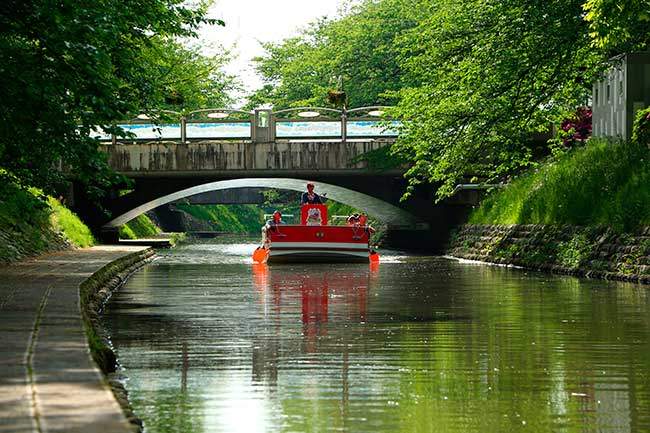
④ Masunosushi
Look at the red signboard on the top of the building over there.
It’s a Masunosushi shop.
Sushi is a traditional Japanese food.
Masu is trout.
We say Masunosushi or Masuzushi. It is one of Toyama’s most famous local foods.
Masunosushi Bento of Ganso Sekinoya
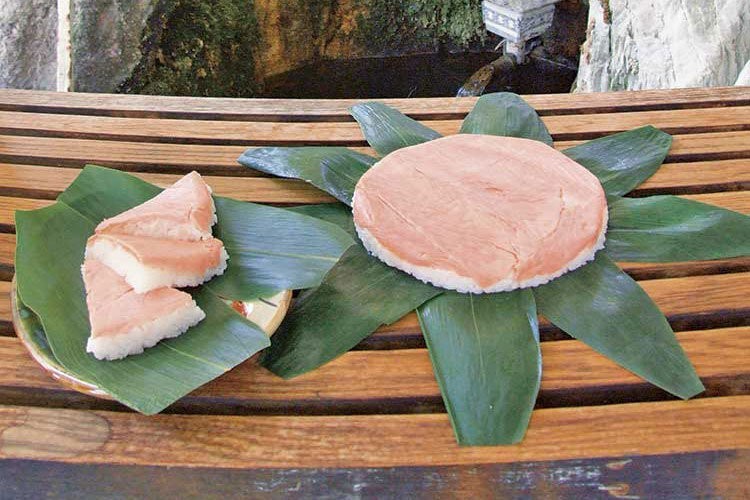
One of the Masunosushi shops “Ganso Sekinoya”
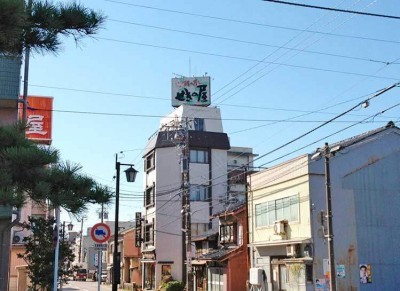
Sakura Masu
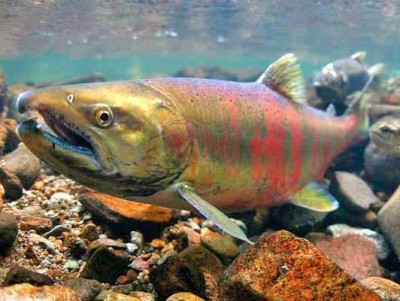
⑤ Pontoon bridge (Funahashi)
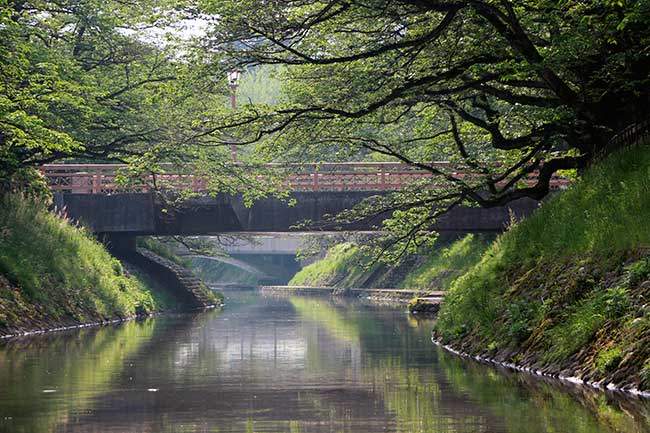
This is the FUNAHASHI, a vestige of the biggest floating bridge in Japan. They Night-Light tied up a maximum of 64 pontoons.
Until 1882, the floating bridge spanned the Jinzugawa river. Each bow and each stern were tied up with iron chain.
Many planks on which people walked were laid across the boats.
It is said that some people fell off the floating bridge.
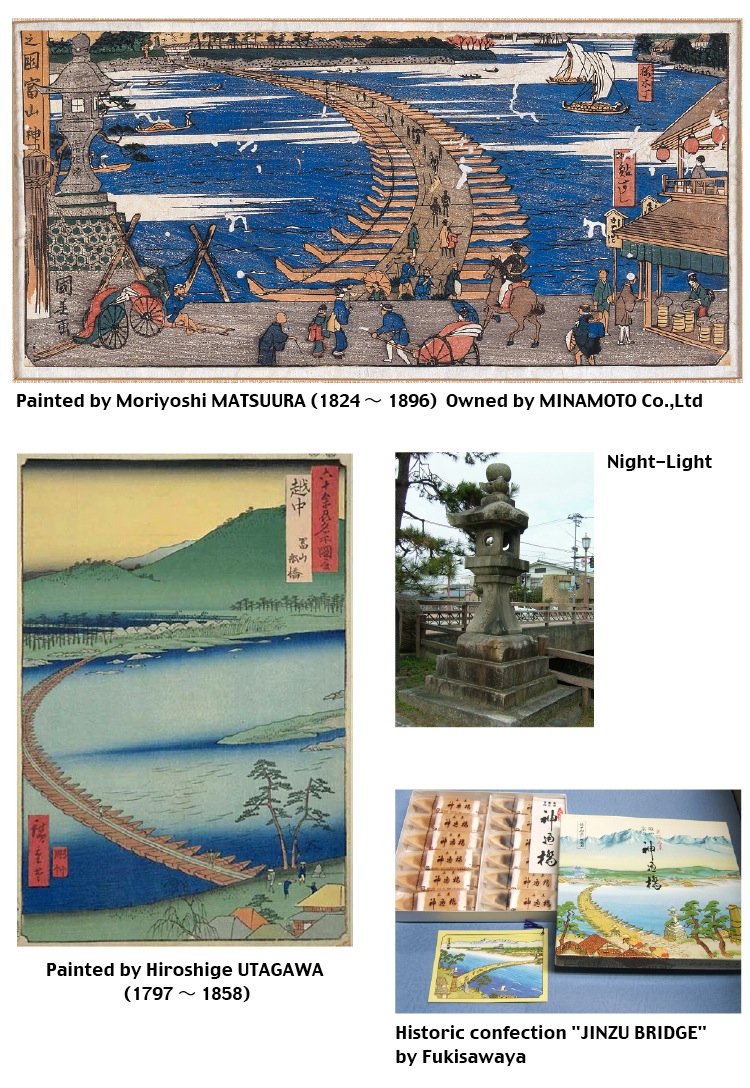
⑥ Mr. Rentaro TAKI 1879-1903
This piece of music “Kojo no Tsuki,” which means “The Moon over the Ruined Castle” in English, is one of the most famous pieces in Japan composed by Rentaro Taki in 1901.
He was the first Japanese person to compose western music.
In his childhood, he lived near here for about 2 years (1886-1888).
⑦ TOYAMA Prefectural Office Building
The river is shallow from here.
We will turn around.
Now we are heading downstream.
Look to your left. This is the TOYAMA Prefectural Police Headquarters.
And next is the TOYAMA Prefectural Office.
You are now seeing the backside of the building.
The main building was constructed in
1935. It was designated as a tangible cultural asset last year.
The front side of TOYAMA Prefectural Office

*Shiokura Bridge
Shiokura means salt warehouse.
In the Edo period, the Toyama domain had salt warehouses around here.
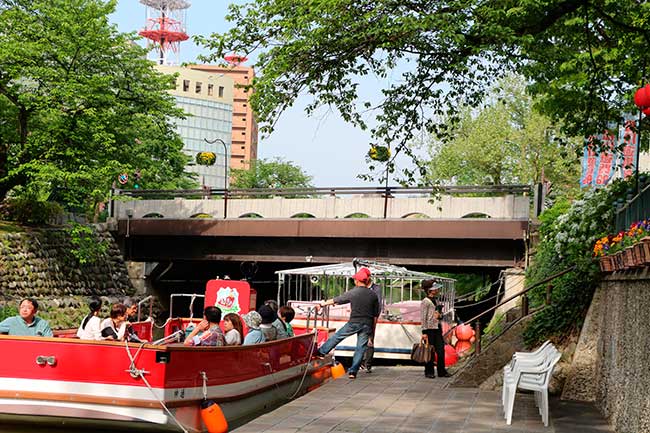
⑧ TOYAMA City Hall
Look to your left. This is the Toyama city office.
The construction was completed in May 1991.
It has an observation tower, and the admission is free.
420,000 people live in Toyama city.
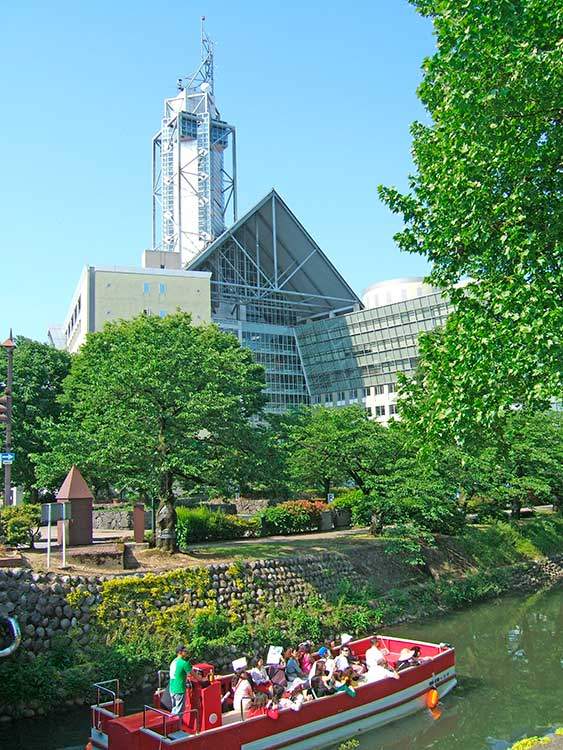
*Observation Tower Information
The deck is 70 meters high, and you can enjoy a 360-degree panoramic
view. If the weather is nice, you can appreciate the beautiful Tateyama
range. (Admission free)
[Hours]
April – Oct.
MON – FRI ( Except for Natinal holiday )
AM 9:00 〜 PM 9:00
SAT, SUN,National Holiday
AM 10:00 〜 PM 9:00
Nov. – Mar.
MON – FRI ( Except for Natinal holiday )
AM 9:00 〜 PM6:00
SAT, SUN,National Holiday
AM 10:00 〜 PM6:00
*The following days & times are opened specially
Dec. 24,25: PM 6:00 〜 PM 9:00,
Jan. 1 : AM 6:00 〜 AM 9:00
*Closed From Dec. 29 to Jan.3
*KAMEI Bridge

⑨ Sakura Bridge
The Sakura Bridge was named after the beautiful cherry trees lining the river.
It was built in 1935.
It was designated as a tangible cultural asset in 1999.
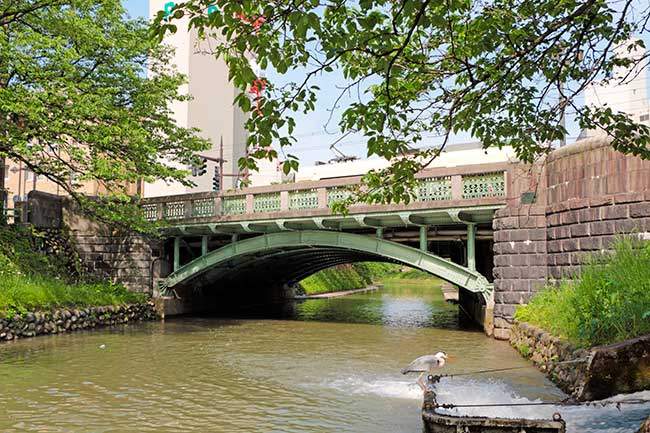
⑩The Kimachi Port (Kimachi no hama)
Now we are returning to the boarding point.
Look to your left. It is the ITACHIGAWA river.
Itachi means weasel.
Weasels used to live nearby the river.
A long time ago, there was a river port called “Kimachi no Hama” right here.
There were a lot of warehouses around here, and it is said that there were about 130 barges which went to and from the estuary.
⑪ Wildlife around the Matsukawa river
Many kinds of fish live in this river.
Carp 鯉
Crucian 鮒
minnow コイ科の小魚
Goby ハゼ
Cat fish ナマズ
Sweet fish 鮎
Dace(デイス)ウグイ
The huge fish are carp. They are edible and delicious.
You can have them as sashimi or cooked in miso soup.
Most of the small fishes are minnows.
Minnows don’t taste that good.
Various kinds of birds living around here.
Gray Heron アオサギ
Duck 鴨
Spot-billed duck カルガモ
King fisher カワセミ
Wag tail セキレイ
Japanese bush warbler ウグイス
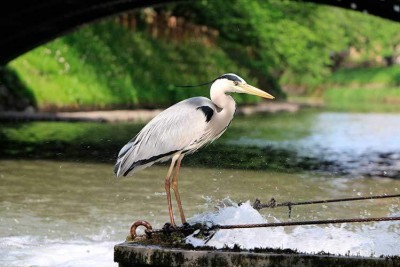
Gray Heron
⑫ Sculpture Park
The park has 28 sculptures which are placed along the riverside of the Matsukawa river.
They were made by artists who were born or live/lived in Toyama.
⑬ SATO KOGYO CO,LTD.
The building with the red triangular roof is the Hokuriku branch office of SATO KOGYO CO,LTD., a major construction firm in Japan founded in Toyama. SATO KOGYO CO,LTD. is skillful at flood control works and tunnel digging. The company appeared both in the movie “The Sun of Kurobe” which depicted how people struggled in the construction of the Kurobe Dam, one of the most difficult projects in Japan, and in the novel “High-Thermal Tunnel.” Established in
1862, SATO KOGYO CO,LTD. has significantly contributed to the modernization of Toyama. Its headquarters is in Nihonbashi, Tokyo.

